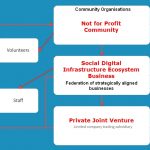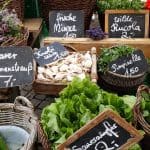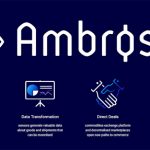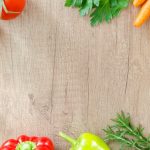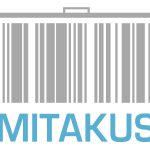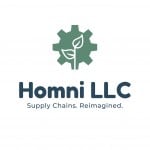All
Submissions
Title
Contributor
Submitted
Humanner – Collective Holistic Social Innovation Ecosystem Management
By Janos Deak
By the Humanner Cooperative Social Business Ecosystem model give financial self-sustainability and emerge the digital infrastructure to connect informal market, unlock the power at the bottom of pyramid, and deliver economic prosperity.
“A charity money has only one life. A Social Business money can be invested over and over again.” (Muhammad Yunnus)
Linking science and technologies to communities of our global society. Humanner’s social R&D focus on interweaving new models so smoothly and seamlessly into the currently prevailing system, that it will not be perceived as opposition, but rather as a higher quality competitive model, which gradually replaces the old one.
Our method is to create a high-quality example while showcasing our understanding of what it means to be human.
Humanner’s system work with a MULTI FUNCTIONAL holistic multisolving approach so that make the investment more impactful. Single investment of time and money – Defined as a way of solving multiple problems with the multisolving approach brings together stakeholders from different sectors and disciplines to tackle public issues in a cost-efficient manner
Humanner unite the two biggest volunteer sectors the Open Source and the Non Profit sector into a Social Business Innovation Ecosystem. We aim to explore how open source software, open source hardware, digital maker practices and open design can be effectively used by local communities to fabricate their own tools, make sense of their environments and address pressing environmental problems.
ProducePathway
By Sindhu Sundar
Policy proposal for collaborative food distribution networks utilizing existing nationally-accessible tools and organizations, and partnerships between community centers, hospitals, farmers, and distributors. Objectives are the identification of in-need communities to provide mobile markets and CSA boxes, as well as subsidization strategies to serve low-income areas.
Digital Surplus Management System
By Kubra Orak
Supported by UNDP to reach SDGs, Whole Surplus provides technology solutions to create value out of unsold inventory.[bc1] Placing technology at the heart of a crucial issue as food waste, Whole Surplus offers holistic and digital solutions to any type of surplus food, that is eligible for human consumption, animal feeding, recycling or landfilling and matches them with the right partner who offers the highest financial and social value. Moreover, the platform provides a data analytics dashboard to reduce waste at the source. With the help of the technology and network that is created, the aim is to reduce partners’ food waste-related carbon emission by 50% and to reach the zero-landfill goal.
COVID-19 Getting Farmers’ Products to Food Banks with Federal Help
By Michael CheKim
Too many crops from too many farms are going to waste as farmers cannot get distributors to buy them. Too many food banks are going dry, and too many restaurants and their staff are idle. As Chef Jose Andres has asked in a recent eTown Hall, “Why can’t the Federal government pay restaurants to make food for food banks?”
Red Kabus: The New Trade Routes
By Soraya Hosni
Our current trade routes are not built for the benefit of farmers, small scale distributors, or the consumer. Our concept is to build and optimize a better trade route, connected via our global relationships that can serve farmers and end-users, and ignite a new food supply chain. Our business has focused on olive oil but plans on expanding to other products.
Ambrosus Blockchain Ecosystem
By Sergii Grygoriev
As the world’s premier blockchain and IoT platform, the Ambrosus Network (AMB-NET statistics here) provides a framework and all of the relevant tools for collecting, storing, and sharing data in a secure and integral fashion. In relation to the Internet of Things (IoT) Ambrosus pioneers first-of-its kind encrypted IoT devices and gateways, that allow for secure and efficient data collection from the physical world.
Meanwhile, the public-permissioned blockchain architecture of AMB-NET has been specifically optimized to scalably and securely store and validate all data uploaded onto the network. With its own proxy establishing a link between the world-wide web and the Ambrosus blockchain, custom applications can be quickly and effortlessly written and monetized in popular programming languages such as JavaScript, iOS, and Android.
Complacent to multiple other ongoing collaborations, in 2020 we have launched pilot projects with quality control company QSS Global and crewing agency Navis Crew Management who will leverage our Native Blockchain AMB-NET for secure data management. Furthermore, our company has been selected as partner to the United Nations 10YFP Sustainable Food Systems and also recognised as one of the Rising Stars by the EU (EIT), one of only 15 companies in Europe to receive such an honour.
We resolve 4 main issues for manufacturers and logistics companies:
- Proof of product origin
- Secured immutable storage of quality and shipment documents
- Easy tracking of your assets
- Decentralized collection of all important statistics about supply chain process and final consumers.
Farm to Table
By Prithu Pareek
Farm to Table is a platform that aims to help solve the issue of increased food waste by farmers as well as food shortages in food banks caused by the COVID-19 pandemic. Farmers, will be able to post any surplus produce that they have. Likewise, food banks will be able to post any need for food that they have. This way we hope to utilize the excess produce that is being thrown away by farmers, as demand has gone down, to fulfill the unmet need for food in food banks and other charitable organizations that have seen an increase in demand due to a large increase in unemployment over the last few months. Additionally the platform will provide lawmakers, policymakers, and other organizations data about where food in the US is being produced and where the demand lies which can be used to shape their policies and decisions.
Mitakus Food Waste tracking
By Roman Wolkow
Mitakus approach is to offer a system of various solutions to reduce food waste in kitchens of food service businesses like restaurants and canteens. Food waste is a driver for negative environmental impact but also a cost driver for chefs and managers of kitchens. One of the major reasons for food waste is the lack of tracking and therefore knowledge of what is wasted when and why. We want to develop a tracking solution, based on an electronic scale, a display and a mounted camera to track all food that is thrown away. The exact food type should be recognized via image recognition of photos taken by the camera. The kitchen employees have only to choose the reason for the food being thrown away. That way we are able to track food waste and additional information to present to the chef and manager.
Making Transparency Profitable: A Push for Vertically Integrated Supply Chains
By John Poor
Amazon, General Mills, Walmart, Costco, Kroger, Albertsons, and Starbucks. All are spending billions to create hyper-transparent, vertically integrated supply chains that provide predictability, resilience, and agility. These firms are realizing tremendous profits because they can quickly disseminate new technology and process improvements, predict, detect, and react to external shocks, and guarantee internal environmental, labor, and quality standards. Frustratingly, these changes are not expanding to sectors like fruit and vegetables, where imports represent 53% and 31% of U.S. supply, and the firms themselves are undervaluing sustainability considerations. Further, the majority of fruit and vegetables we import, originate on small and medium-sized farms that are isolated within horizontal supply chains.
This means that the families and individuals who operate these farms act alone. Interacting with downstream firms is exceptionally costly, bargaining power limited, risk concentrated, and flexibility low. This likely is why Hiroshima University’s 2019 total factor productivity (TFP) deep dive into the Vietnamese agricultural sector showed a 38% TFP increase among large firms and a 71% TFP decrease among small firms.
Begging the question; Why, if vertical supply chains offer such significant benefits for agriculture, has the global system overwhelmingly operated on a horizontal model?
It’s only within this decade that technology exists to sufficiently reduce transaction costs within supply chains, allowing vertical supply chains to function.
Vertical integration is rapidly expanding in fashion, logistics, manufacturing, retail, and tech because it works, and because unlike agriculture, there are no small-hold microchip manufacturers or aluminum smelters. If the U.S. is going to improve long-term food security, policymakers, business professionals, academics, and subject matter experts must solve three challenges simultaneously. They must determine how to accelerate the adoption of vertically integrated supply chains, how to make it a small-holder inclusive process, and how to prioritize organizational structures capable of delivering social and environmental sustainability goals.
Rescue Food Waste Into Sustainable Fibers
By Robert Luo
We transform “bad” casein protein into “good” casein protein from excess milk. Once we have the “good” casein protein, it can be made into cheese, yogurt, and other types of dairy products or be created as fibers. We are giving food waste a new life.

